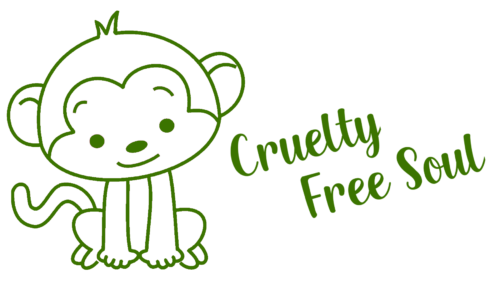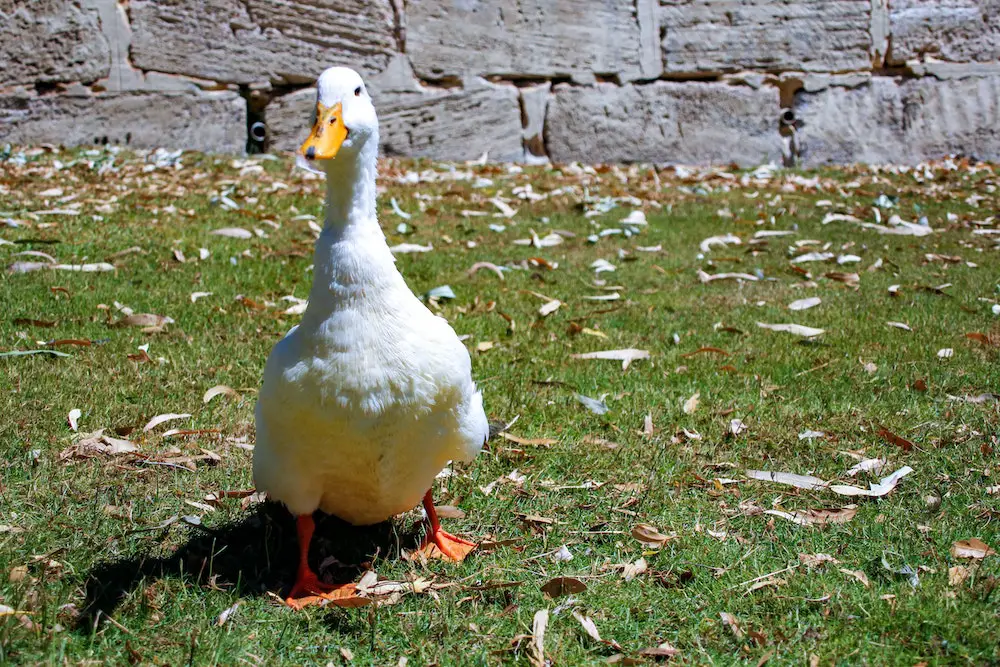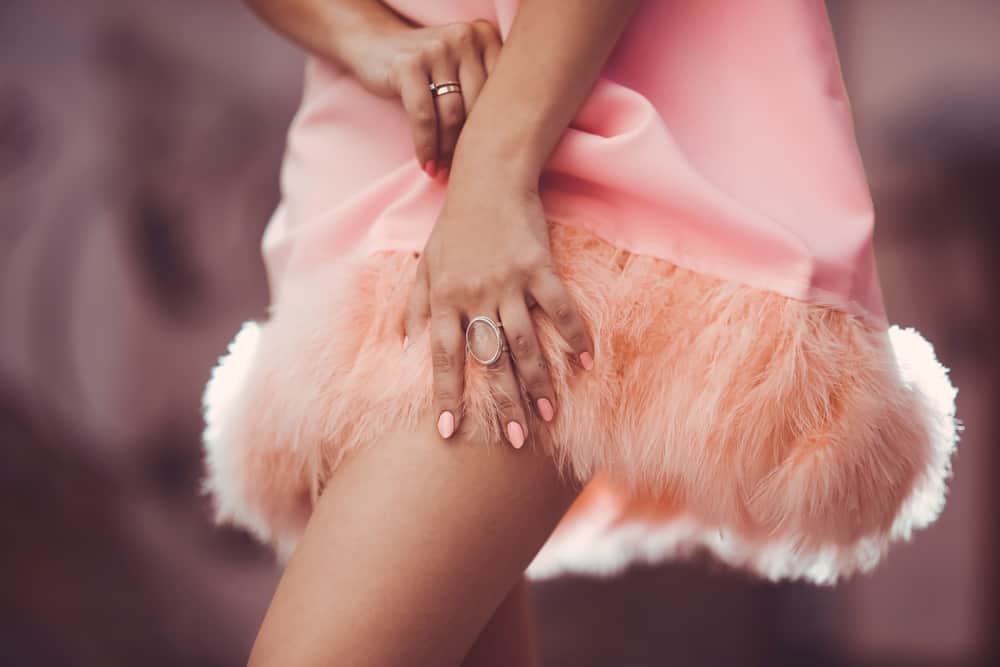There are varying degrees of ethical standards when sourcing feathers. Here’s what to look for as a conscious consumer so you can check whether your down feather coat is “sustainably sourced” or “cruelty-free.”
The only way for feathers to be 100% cruelty-free is to collect them as a bird molts, known as molt-harvesting. Alternatively, all products made with ethically sourced feathers have a badge of honor from a globally recognized certification body.
Let’s walk through some different definitions and standards used in the industry so that you can shop with more confidence for those winter warmers and party accessories.
What Are Cruelty-Free Feathers?
Feathers are considered cruelty-free if no harm comes to the bird in an effort to acquire its feathers, including down.
Down is made from the soft under plumage of ducks or geese. It’s often used to make highly insulative and lightweight apparel and homeware-like comforters.
There are limited ways to retrieve these materials, but it is possible. The most common form of ethical feather retrieval is molt harvesting.
Why Molt-Harvested Feathers Are Cruelty-Free
Conscious shoppers will agree that “molt-harvesting” is an ethical way to source feathers without harming the animal.
Molting is a natural process that birds go through to replace feathers that have succumbed to general wear and tear. It’s normal and does not hurt the bird at all.
Depending on the species, birds molt seasonally, so their wings are in tip-top shape for long flights in the fall or when it's time to mate.
Of course, for molt-harvesting to be completely cruelty-free, the birds also needed to be granted their five freedoms of animal welfare. This includes:
Animal welfare aside – retrieving feathers is heavily time-consuming and depends on natural forces out of human control.
That’s why it is unlikely that any significant supply chain or company could sustain this as a business practice.
Companies rely on consistency in their supply chain, both quality and quantity. Molt-harvesting, while highly ethical, is anything but consistent.
Yes, birds naturally molt several times a year, but the quality and quantity of feathers dropped will vary dramatically.
So molt harvesting may work for a small local business, but it would be untenable for any large corporation or company.
Not to mention the cost associated with it is unattainable for most.
Eider Duck Down Collection
Eiderdown is the perfect example of an ethically sourced commercial down. All of it is sourced from the female Eider ducks that live in northern climates like Canada and Iceland.
These birds pluck their own breast feathers and use them to line their nests.
The biggest pro to buying an Eiderdown product is that all the down is collected once the chicks have fled the nests, and there are organizations protecting the nesting colonies.
The downside? (Excuse the pun.) It’s ridiculously expensive. An Eiderdown comforter can cost up to $16000 on the market.
The Issues Associated with Molt-Harvesting Alternatives
The dilemma that companies face if they want to source feathers ethically is that they need to avoid live-plucking without relying on molt-harvesting.
Live-plucking is the most common way to retrieve feathers. It is not cruelty-free or ethical.
It’s a violent and stressful process that involves restraining a bird while humans rip its feathers from its body, often resulting in bleeding.
Different companies and organizations each have their approach.
Some argue that taking the feathers from a bird raised and killed for slaughter is not considered harmful.
Others say that there is no effective way to ensure that the animals won’t be harmed, so there’s no such thing as genuine cruelty-free feathers.
Beyond that, The United States Food and Drug Administration does not formally define “cruelty-free.”
Luckily, independent organizations have created their definition of “cruelty-free.” Which is what we’ll look at next.
Can Down Feathers Be Responsibly Sourced and Ethical?
PETA (People for the Ethical Treatment of Animals) claims that in their view:
“It’s impossible to tell whether the down used in the products you buy was obtained from live-plucked birds. The only way to stop live-plucking and ensure that no birds suffer for your clothing or bedding is to choose cruelty-free materials.”
When they say “cruelty-free,” they imply that the feathers are synthetic and made from plastics or other alternatives.
However, if you’re not vegan, you can consider looking at third-party organizations that provide some form of ethical standard certification.
Third-Party Cruelty-Free Feather and Down Certifications
Two main certification bodies are recognized internationally. Whether you want to source ethical feathers in the UK or Australia – you can rely on these standards.
Both these organizations are independent, voluntary, global initiatives that promote the ethical treatment of ducks and geese.
Although both standards are good, the GTDS seems to have slightly stricter regulations.
You can see this in the GTDS’s auditing requirements and that, unlike RDS, it requires mandatory parent farms certifications.
RDS vs. GTDS Standards and Regulations
Ethical Standard | Global Traceable Down | Responsible Down |
|---|---|---|
Live plucking | Not allowed | Not allowed |
Force-feeding | Not allowed | Not allowed |
Five freedoms | Must be provided. | Must be provided. |
Products it covers | Apparel | Apparel and home goods. |
Highest-level farm certified | Parent farm to finished product. | Hatching to finished product. |
Labeling | Only applies to products with 100% certified down. | Only applies to products with 100% certified down. |
Timing of certification | Certification is valid for three years. After the first certification, two annual surveillance audits are needed for the following three years. This includes document review and onsite audit. | Certification is valid for 14 months. It must be renewed every year with a regulatory audit to confirm compliance. |
Parent farms | Certification is always required. | Certification is optional. When RDS down is collected from a parent farm, the whole farm must be regulated. |
If you’re set on buying a down duvet – there could be a way to find one that is sustainably sourced. You can find everything you need to know here: Can Down Products Be Cruelty-Free?
Are Ostrich Feathers Cruelty-Free and Ethical?
It’s much harder to establish whether ostrich feathers and cruelty-free and ethical. And awareness needs to be raised.
Forget about your feather dusters for a second – did you know that Ostrich feathers are the most commonly used feathers in the fashion industry?
They’re prized for their lush quality that doesn’t molt and is easy to dye.
Like all other feathers used by big business, they can be collected by live-plucking or taken post-mortem when the bird is also killed for its skin and meat.
Ostrich feathers are farmed on a much smaller scale, predominantly in South Africa, where farmers must abide by the Animal Protection Act and other legislation. But this doesn’t mean it’s always ethical.
Of course, removing the feathers post-mortem is the better (more pain-free) option – but live-plucking is still practiced.
Either way, these animals are forcibly restrained, have a bag thrown over their head, and are subjected to severe trauma as their feathers are torn out.
Of course, some smaller farmers will voluntarily treat their birds more ethically – but it’s not the norm!
So if you’re looking for ostrich feathers and you don’t know where they come from – it’s best to leave them behind!
Are Feathers and Down Vegan?
No, feathers and down are not vegan as they are sourced from animals. This means that it would not be suitable for vegans to wear or use feathers.
The term “vegan” in itself implies that your whole lifestyle does not support the use of animal products and by-products at all.
If you simply do not eat meat or animal by-products like milk, you follow a plant-based lifestyle.
Technically speaking, you would be allowed to use feathers if you follow a plant-based lifestyle.
How To Tell If Feathers are Vegan?
If you walk into a craft store and pick up a packet of brightly colored feathers, chances are that they are real.
In fact, almost any time you see feathers on clothes, accessories, or crafts – they’re probably real.
Vegan or synthetic feathers are made with plastic. On a small scale, it’s possible to make a fairly convincing replica. Even so, it’s unlikely you’ll get that same detail and feel as you run your hands through one.
The delicate and fine nature of a feather means it’s also nearly impossible to replicate it commercially for a low price. Not in a convincing way, at least.
In other words – if a feather is fake, then you’re almost guaranteed to notice it.
Just a word of warning, craft feathers are often marketed as “synthetic,” but that is rarely true. People may mistake them as fake because they’re cheap and brightly colored.
The truth is that poultry feathers are cheap, and it’s very easy to dye them.
If you’re unsure whether a feather is real or fake, you can hold a flame to it. A plastic one will melt and stick together, whereas a real one will disintegrate similarly to your hair.
Vegan Feather Alternatives
Most people are familiar with the idea of buying faux fur, but what about faux feathers?
Vegans have paved a path to a more ethical future by demanding alternatives that didn’t exist that long ago.
Today, there is an abundance of synthetic feathers and down products with different benefits to the real deal.
The benefit to using genuine down is that it’s easily recyclable and biodegradable. Patagonia is known for using recycled down and is moving to 100% renewable and recycled materials.
On the other hand, synthetic options are 100% vegan and cruelty-free. It’s also often entirely waterproof (unlike real down).
Here are some names to look out for on the labels that indicate an awesome synthetic “cruelty-free” alternative to genuine feathers.
Synthetic Down
These are polyester fibers woven together to mimic the warmth and feel of genuine down.
Synthetic down has an advantage over the real thing, though. It will retain the warmth and feel even when it gets wet!
Genuine down becomes useless when wet, so this alternative is not only “cruelty-free” but also a smart choice for unpredictable weather!
Primaloft Mimics Down
Primaloft was first made as a research product in the 1980s for the United States Army.
This is another synthetic weave of fibers made to mimic down and it’s also waterproof.
Some perks of Primaloft also include that it is super lightweight compared to genuine down and much easier to pack into tight spaces.
Primaloft comes in various standards, so be sure to check out the individual differences in the different blends right over here.
Products made with Primaloft are sure to be excellent at keeping you warm and dry.
Thinsulate Uses Much Finer Fibers
This is a product first made by the company 3M back in the 1970s.
What separates this blend of fibers from the polyester synthetic down is that the fibers in Thinsulate are thinner.
3M suggests this makes the product superior when it comes to insulation due to a greater density of thinner fibers when compared to other synthetics. Plus, it is still fully functional when wet.
Where Can I Buy Vegan Feather Alternatives?
While it may have once been tough to find high-quality feather and down alternative products, now it is easier than ever.
Several big box nationwide retailers regularly stock these products. Many companies have even added synthetic and down alternatives as a filter option when searching for an item online.
Brands like Patagonia and The North Face will give you good vegan alternatives for apparel and homeware. Unfortunately, Canada Goose is not on this list yet.
Certain brands have also banned the use of feathers altogether. This includes big names like Asos, TopShop, and Sweaty Betty.
For a 100% vegan brand alternative, you can look at Save The Duck, which makes lightweight, breathable, and warm outdoor wear.
It uses a form of synthetic down called PLUMTECH® and recycled PLUMTECH® to achieve similar results to down.
You can check out your local outdoor stores too. The associates at these stores should be well trained and knowledgeable to make sure you leave with a product you trust to keep your body warm and keep your conscious clean.
Are Feathers in Fashion Cruel?
Unfortunately, yes! For a large portion of the industry, at least.
Feathers just keep coming back in style, no matter what – from the 1920s flapper dresses to Katy Perry creating enormous angel wings out of feathers at the 2018 Met Gala.
But why hasn’t the use of feathers rung the same exploitative bells that furs or exotic pelts have?
It comes down to the fact that most shoppers are still unaware of how cruel the process of live-plucking is.
The more feathers you see on a piece of clothing – the less likely those feathers were sourced humanely. Not to mention if it comes from a fast-fashion brand too.
And if there’s no RDS or GTDS badge on the item, then we highly recommend staying clear of all feathery items that come from commercial clothing brands.
Here’s why.
Unethical Feather Scandals in Fashion
Did you know that about 80% of all the feathers and down supply are farmed in China? With the other 20% coming from Hungary, Poland, and North America.
When PETA did some research in China, it found a shocking amount are still selling live-plucked down and feathers wholesale. Not to mention those birds are often force-fed too, to prepare them for the frois gras market.
“Birds would be pinned down while they are ripped apart for their feathers before being sewn back together with no painkillers,” says Anne Brainard, Peta’s corporate affairs manager.
The tricky task that most brands face is tracking these birds from hatchery to slaughterhouse to ensure they are treated humanely.
Why Patagonia Created The GTDS
Patagonia is one of the brands that had no idea how severe the down-sourcing problem was until it reintroduced down to its range in 2002. As much as it tried to source ethically – it was near impossible.
In 2011, it discovered that some of its down was still being sourced by live-plucked birds in Hungary. This is particularly shocking since the European Union banned live plucking in 1999.
So, it decided to create its own traceable system called the Global Traceable Down Standard (GTDS).
Many other brands that want to provide ethical down have faced similar issues and have since become RDS or GTDS certified to prevent further issues.
Make Your Own Cruelty-Free Feathered Items
In 2017, a Tawainese artist, Sheng-Wen Lo, decided to challenge the system and make his own down jacket!
Every morning he would go to parks, ponds, and forests to collect all the small feathers left behind by geese. It was a methodical process that took him almost two months and 3000 feathers to complete – but he succeeded!
Luckily you don’t have to head to the nearest pond to start digging for molted feathers to make a cruelty-free garment!
Various environmentally conscious fashionistas are helping make this possible. For example, Rene Creasy owns a farm in Virginia called Cruelty-Free Feathers, where she only sells molted feathers – and nothing else.
So, place your orders and get creative.
Just remember that when it comes to exotic or wild birds – their feathers are illegal for use no matter what. Even if you just want to use some for arts and crafts, please do not purchase any.
Cruelty-free feathers can be difficult and expensive to come by.
The only cruelty-free way to obtain feathers without killing the bird is to gather its feathers by molt-harvesting. Unfortunately, it’s an unreliable method that can be prohibitively expensive.
If you want to find genuine cruelty-free down, your best bet is to look for the RDS or GTDS standard approval mark. If you don’t see it, the feathers were very likely live-plucked.
Alternatively, you can also choose to source your own ethically produced feathers from a reputable farmer and make your own items.
If you are vegan or do not want to support the industry, there are several great alternatives to down that are entirely synthetic and just as functional, like synthetic down, Primaloft, and Thinsulate.
The only disadvantage to these products is that they are not nearly as biodegradable and eco-friendly as real feathers.
But ultimately, buying an RDS or GTDS certified item or a similar synthetic alternative is the best way to ensure your new jacket is cruelty-free and ethically sourced!


